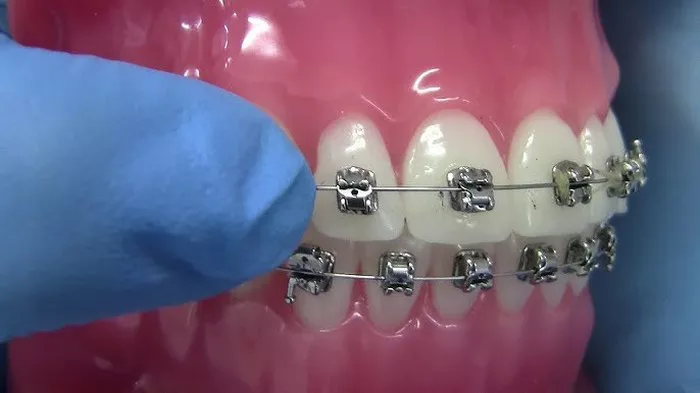Speed brackets are a type of self-ligating orthodontic bracket that have revolutionized modern dental braces. Unlike traditional brackets that require elastomeric ties or metal ligatures to hold the archwire, speed brackets utilize a spring clip mechanism to secure the wire in place. These brackets offer numerous benefits such as reduced friction, shorter appointment times, and improved hygiene.
Opening speed brackets properly is essential to prevent damage to the bracket, wire, or the patient’s teeth. This article will provide a comprehensive guide on how to open speed brackets safely, including a breakdown of tools, techniques, precautions, and troubleshooting tips.
What Are Speed Brackets?
Speed brackets are small metal devices bonded to the teeth as part of an orthodontic treatment system. They feature an integrated clip that locks the archwire in place without the need for external ligatures. This clip is designed to open and close as needed, facilitating easier adjustments by orthodontists and reducing treatment time for patients.
Key Features of Speed Brackets
- Self-ligating mechanism
- Low-profile and comfortable design
- Reduced chair time
- Less friction between wire and bracket
- Enhanced hygiene due to absence of elastic ligatures
Tools Required to Open Speed Brackets
To open speed brackets correctly, specific orthodontic tools are needed. Using the wrong tool can result in breakage or patient discomfort.
Common Tools
Weingart pliers – for grasping and maneuvering wires
Self-ligating bracket opening tool – specifically designed to open the clip safely
Explorer or scaler – sometimes used to lift the clip with precision
Mirror and light source – for improved visibility during the procedure
Step-by-Step Guide on How to Open Speed Brackets
Opening speed brackets is a procedure that should be executed with care and precision. The following steps outline the standard clinical technique:
Step 1: Ensure a Clean and Dry Field
Use air and suction to clear the working field. Moisture or debris can obscure visibility and make the clip harder to open.
Step 2: Examine the Bracket
Use a mirror to inspect the bracket. Note the direction in which the clip opens. Most speed brackets open from the gingival (gum) side upward.
Step 3: Select the Correct Tool
Use a bracket opening instrument or scaler. Place the tip gently under the clip on the gingival side.
Step 4: Apply Gentle Pressure
Lift the clip upward in a slow and controlled motion. Do not use excessive force. The clip should release smoothly and allow for archwire removal.
Step 5: Remove the Archwire
Once the clip is open, use Weingart pliers to slide the archwire out of the bracket slot. Ensure the patient is comfortable throughout.
Precautions and Best Practices
Opening speed brackets requires attention to detail. Improper technique may cause pain, damage the bracket, or prolong treatment time.
Tips to Keep in Mind
- Never force the clip open
- Always support the bracket base to avoid detachment
- Use bracket-specific instruments
- Avoid opening brackets when plaque or debris is present
- Communicate with the patient during the procedure
What to Avoid When Opening Speed Brackets
Many common mistakes can be avoided with training and attention. Here are a few practices to steer clear of:
Using Inappropriate Tools
Do not use general dental instruments not designed for orthodontic brackets. This can damage the clip or the enamel around the bracket.
Applying Excessive Force
Forcing the clip open can bend or break the mechanism. If resistance is felt, re-evaluate the approach or use a different tool.
Neglecting Infection Control
Ensure all instruments are sterilized and use personal protective equipment to maintain proper hygiene standards.
Troubleshooting: Clip Won’t Open
If the speed bracket clip resists opening, take the following steps:
Step 1: Reassess the Angle of Entry
Ensure the instrument is entering from the gingival side, beneath the clip.
Step 2: Use a Different Tool
Switch to a more precise instrument such as an explorer if needed.
Step 3: Clean the Area
Plaque or calculus may be obstructing the clip. Use ultrasonic scaling if necessary.
Step 4: Check for Manufacturing Defect
Though rare, some clips may be defective or worn. Consider replacing the bracket if the issue persists.
Comparison With Traditional Brackets
Opening speed brackets differs significantly from traditional brackets. In conventional systems, elastomeric ties must be removed with a scaler or ligature remover, whereas speed brackets simply involve lifting the clip.
Benefits of Speed Brackets
- Faster wire changes
- Less chair time
- More comfortable for patients
Challenges
- Initial learning curve for dental professionals
- Requires specialized tools
- Higher cost compared to conventional brackets
Conclusion
Opening speed brackets is a vital skill for any orthodontic professional. By understanding the bracket design, using the correct tools, and applying a gentle technique, the process becomes efficient and safe. Patient comfort, bracket integrity, and proper wire management all depend on how well this step is performed.
Whether you are a seasoned orthodontist or a dental assistant in training, consistent practice and attention to detail are key to mastering the art of opening speed brackets. With the growing popularity of self-ligating systems, this knowledge is more relevant than ever.
Related topics

